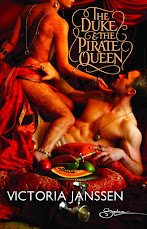#
Everything Old is New Again
By Gemma Files
Back when I was a kid, in much the same way that I would have been utterly startled to be told that even an incredibly mainstreamed version of Rap music would eventually occupy most slots on a computer-file equivalent of the Billboard Top 100, the idea that vampires would have become the go-to monster of the Milennium's turn would have amazed me beyond measure. And yet: Everywhere you look, these days, it’s a cornucopia of fangs--though usually coming firmly attached to a very specific type of vamp, ie the pale, sexy, mournful, conflicted kind so stringently popularized by books, movies and TV series like Twilight, Buffy the Vampire Slayer and True Blood.

Oh, every once in a while you get a throwback to the pre-Anne Rice tropes—-Steve Niles' 30 Days of Night graphic novel springs to mind, along with the movie it inspired. But in my chosen genre, the vampire--once a Horror mainstay--has become so much of a joke that when guidelines routinely warn against submitting anything featuring the "classic" monsters, vampires are assumed to go right up the very top of that list. Vampires, like werewolves (and, increasingly, fairies), have been relegated to the ever-expanding Paranormal Romance sub-genre, with categorical emphasis falling extra-heavy on the latter part of that compound, rather than the former.
So the question becomes not "Can one still write vampires and succeed?", because obviously, one can...but rather "Can one still write vampires which startle, discomfit, surprise, let alone scare?" Can one possibly keep the vampire fresh as both a monster and as a character, even now it's become so amazingly ubiquitous?
My thesis is that the best way to break free from the Bram Stoker/Anne Rice/Stephanie Meyer paradigm is by re-examining the roots of the legend--a creature neither dead nor alive, which subsists on something stolen from human beings, possibly conjured to explain the effects of various natural occurences and diseases--and simultaneously opening yourself up to alternate visions of "the vampire" from around the world: The Gaki of Japan, the Strix of Ancient Rome and the Bruxsa of Portugal, the Lamia of Ancient Greece, the Jiang Shih of China, the Baital of India, the Ekimmu of Ancient Mesopotamia, the Langsoir, Pontiannak, Polong, Pelesit and Penanggalen of Malaysia, the Civatateo of Mexico, the Obayifo of Africa and the Loogaroo of the Caribbean, etc.
What is it they take from us, and how do they take it? Maybe blood is too easy a substance, too intimate, to actually scare us anymore. In the Philippines, for example, the Aswang is a shapeshifter that delights in sucking unborn children straight out of their mothers' wombs using a long proboscis; ironically, an Aswang is often the result of a botched attack by another Aswang, which only succeeds in robbing the foetus of its humanity. But what if the vampire in question robs you instead of memory, or time, or ability--like the Leannan-Sidhe of Ireland, which inspires poets to do their best work while simultaneously sucking their life-force from them? And how are their table manners? The Ekimmu tears its prey apart, arriving and leaving through solid walls, while the work of the Lamia, Jiang Shih, and even the Strix or Obayifo can easily be mistaken for that of simple wasting diseases, tropical or otherwise—the same impulse which once conflated tuberculosis, or "consumption," with vampirism.

One way or the other, there's no mistaking any one of these alternate forms of vampirism for the pseudo-civilized, almost "expected" tropes of Sookie Stackhouse’s universe. Even something as apparently simple as the Bruxsa, a vampire-witch hybrid which seals its transition from human to monster by killing its own children, then becomes a type of night-flying bird like an owl or raven--think about the horrific impact of a woman sitting at her kitchen table whose head suddenly swerves ninety degrees, so she can confront the person sneaking up on her. Or the Langsoir, who also often travels in an owl's shape, whose beautiful black hair parts to reveal a "feeding mouth" on the back of her neck; in order to defeat her, her nails must be cut and stuffed into this same orifice. Sort of beats a stake all to hell for originality, doesn't it?
Each of these "new" types of vampire is actually A) not new at all and B) fairly easy to research, especially in the age of Google. So look around, and go to town; no one ever lost points for originality, that I know of. And the norm was made to deviate from...as all good vampires certainly know.
#
Thanks, Gemma!
Gemma Files is an award-winning horror author who’s published two collections of short fiction and two chapbooks of poetry. Her first novel, A Book of Tongues: Volume One in the Hexslinger Series, is available from ChiZine Publications.




Fascinating information! And now, because I already have an over-active imagination I'll have nightmares about the swiveling head lady LOL
ReplyDeleteGreat article, I loved it. Thanks! :)
ReplyDeleteVery heartening, since I hate to think of topics becoming off limits due to overpopularity. Thanks for the word on how to defeat a langsoir, too ^_^
ReplyDeleteWhat fascinating info!
ReplyDelete